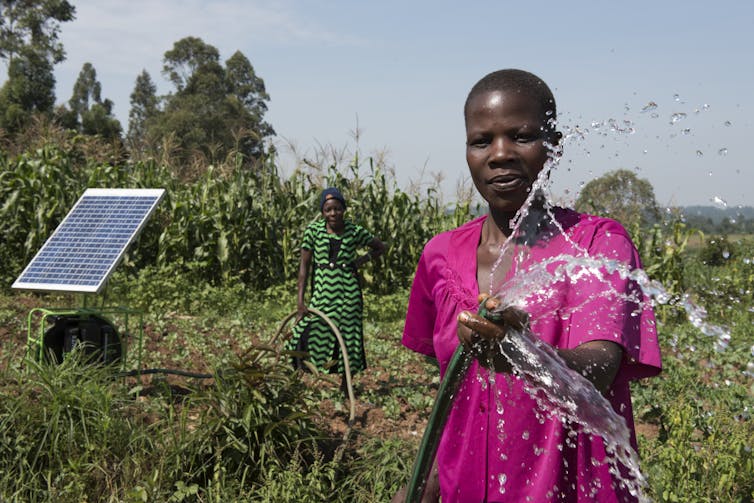News
COP26: countries are not spending nearly enough on adapting to climate change

Responding to climate change is a matter of “adapt or die” according to Emma Howard Boyd, the chair of the UK Environment Agency. While much of the attention at COP26 is trained on reducing greenhouse gas emissions and mitigating the crisis, these gases are already at dangerous levels in the atmosphere and will continue to influence the climate for decades to come. Adapting to the mounting floods, droughts and heatwaves is equally as important.
These consequences of climate change already affect communities worldwide. Many countries have developed national adaptation plans to make infrastructure more resilient. But most countries in the Global South are struggling to implement these changes without additional funding.
African nations, including Kenya, Tanzania and Uganda, have proposed a finance deal at COP26 – the UN climate change summit in Glasgow – which would channel US$700bn (£520bn) every year from 2025 to help poorer countries build barriers which could alleviate coastal flooding for example, and install solar-powered irrigation systems for growing food.
Between 2014 and 2018, 57% of adaptation finance in sub-Saharan Africa arrived via loans, mainly, from wealthy countries and the World Bank. Only 42% of this money came through grants. Loans increase the debt burden on already beleagured countries.

A new report by the UN Environment Programme showed that the costs of damage from climate change in developing countries are five to ten times greater than the amount of public aid so far raised. Zimbabwe, for example, devotes about 9% of its GDP to funding adaptation efforts. But need exceeds expenditure among developing countries by about 80%.
The gap between these two is growing. Continuing to delay adequate funding will be more expensive in the long run, and expose more people to greater and greater risk.
The benefits of funding adaptation
Although around 79% of all countries have adopted some form of national adaptation plan, no country is adapting fast enough.
Even in a wealthy country like the US, almost a quarter of roads and other critical infrastructure – from hospitals to police and fire stations to wastewater treatment plants – are at risk of inundation by flood water if they aren’t adapted, according to a recent report. Cities globally are unprepared. Two hospitals in east London had to tell patients to stay away after torrential rain caused severe flooding in July 2021.
US$16.7 trillion of fiscal stimulus has been deployed by governments since the beginning of the pandemic. This is far less than what governments have funnelled towards climate adaptation over the last few decades. But properly funding efforts to adapt to climate change can benefit public health as well, by slowing the environmental changes which breed disease outbreaks.
Research in Laos showed that investment in drought and flood-resistant rice seeds raised profits by 78%. Investing in projects to adapt to the effects of climate change can be lucrative. Investing USD$1.8 trillion in things like storm early warning systems, protecting mangrove forests, reinforcing buildings and nurturing dryland farming could generate USD 7.1 trillion in total net benefits. Additional funding could come from the private sector, which has so far contributed little.
Funding adaptations to climate change is not about giving money – it’s about ensuring countries can limit the damage from climate change and seize the opportunity to develop sustainably in a warming world.

This story is part of The Conversation’s coverage on COP26, the Glasgow climate conference, by experts from around the world.
Amid a rising tide of climate news and stories, The Conversation is here to clear the air and make sure you get information you can trust. More.
Olalekan Adekola, Senior Lecturer in Geography, York St John University
This article is republished from The Conversation under a Creative Commons license. Read the original article.





















